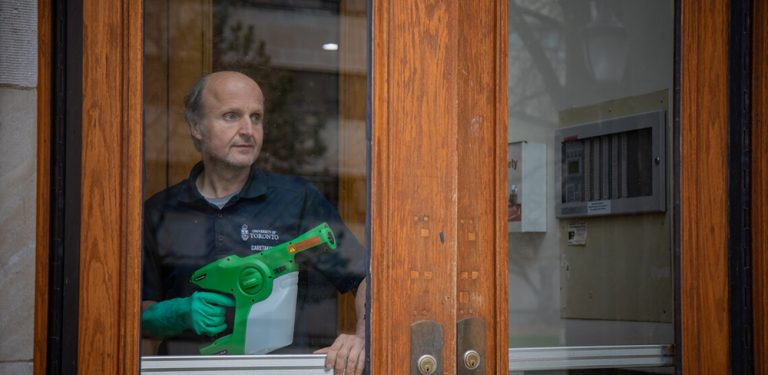Caretaking
The Caretaking team is responsible for maintaining the cleanliness of interior spaces. We follow an environmentally friendly cleaning program, using products, equipment and procedures that leave the smallest ecological footprint possible.
Services
Regular services
- Chalk supply
- General cleaning
- Lamp replacement
- Patrol cleaning of public areas
- Washroom supplies
- Scheduled carpet cleaning
Special services
- Caretaking for special events
- Interior perimeter glass cleaning
- Non-hazardous spill and emergency flood cleanup
- Restricted area cleaning
- Shampooing upholstered furniture
- Wall washing
- Weekend cleaning
- Additional, off-cycle carpet cleaning

Get started

Find your caretaking team
Your caretaking team can help you request a caretaking service or supply refill.

Submit a service request
To request a special service, submit a service request.
Rates
Regular services are provided at no extra cost to you. When you request special services, they will be billed to you at the rates below.
| Group | Trade code | Rate | Overtime rate* (150%) | Overtime rate* (200%) |
|---|---|---|---|---|
| Caretaking Services | 20 | $50.00 | $63.00 | $79.50 |
*For overtime or after-hours work, you will be charged for a minimum of four hours at the overtime rate.
For questions about caretaking services, email caretaking.service@utoronto.ca.
